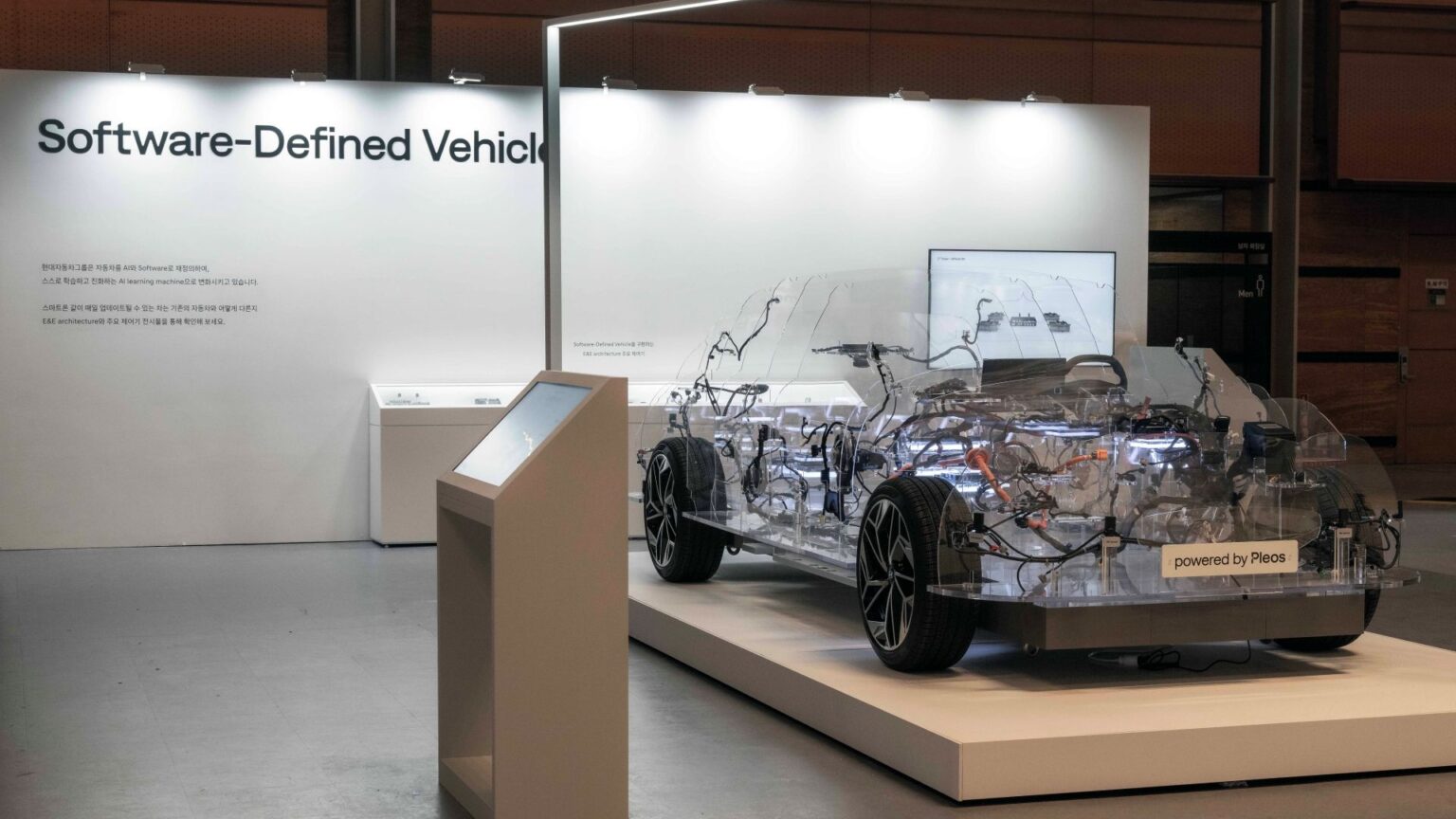Modern vehicles are incredibly complicated. Today’s cars and trucks are probably more computer chips and software than they are steel, glass, rubber, and plastic. As more and more electronic features come out – advanced driver assistance technologies, infotainment system upgrades, and increased vehicle connectivity – this trend is only going to continue. To stay ahead of the curve, and rival automakers, the Hyundai Motor Group recently announced a new in-house software division.
Meet Pleos, A Mobility Software Division
This news was recently announced at the “Pleos 25” developer conference in Seoul, South Korea. This new software brand is designed to help accelerate the development of software-defined vehicles as well as spearhead the creation of a next-generation infotainment system that will feature a new in-vehicle app store.
If the etymology of this new division intrigues you, Hyundai shared a little explanation of what Pleos means. A portmanteau of sorts, this name is based on the Greek word “Pleo,” which means “more,” and “OS,” shorthand, of course, for “operating system.”
According to the automaker, Pleos is “a mobility software platform that supports all devices in motion to move autonomously and be managed smartly. It connects transportation and infrastructure, including vehicles, to help users, businesses and cities establish a freer, more efficient mobility environment.” Enabling these lofty goals are things like a unique vehicle operating system, cloud-based infrastructure, powerful computer processors, and the new Pleos Connect infotainment system.
Breaking Down Some Specific Features
That new Hyundai Motor Group Vehicle OS was developed in-house, specifically for software-defined vehicles. Featuring a modular design and standardized architecture, this system uses high-performance computer hardware and zone-specific controllers, a configuration that allows for continuous updates to add new features, correct potential bugs, and keep things secure.
Pleos Connect is a next-generation infotainment system. Like rival offerings, this one is based on the Android Automotive OS, though unique features and other customizations will be supported. This system will also provide compatibility with mobile apps, should have a familiar “smartphone-like UI,” and a voice-activated digital assistant will be included. Expect the Pleos Connect multimedia array to debut in the second quarter of 2026. The automaker expects this system to be installed in more than 20 million vehicles by the year 2030.
Aside from all that, there’s the Pleos Playground. Third-party mobile application developers can easily access this platform and publish software through the integrated app market. End users, of course, can download these programs and enjoy them on in-vehicle infotainment screens. This system also supports plug-and-play capability, so external hardware can be hooked right up to the vehicle.
In a media release, the president and head of Hyundai and Kia’s Advanced Vehicle Platform Division, Chang Song, said, “Today, starting with Pleos 25, we are transforming into a company providing software-centered mobility experiences.” Beyond that, the executive added, “Our ultimate goal is to achieve Cloud Mobility, where all forms of mobility are connected through software on the cloud, and continuously evolve over time. Pleos serves to create a connected mobility experience expanding from a vehicle to fleets, hardware to software, and ultimately to the entire mobility infrastructure and cities.”
TopSpeed’s Take
There are a lot of buzzwords here – operating system, software-defined vehicle, app store, and more – but this is where the automotive industry is heading. Increasingly, modern vehicles are defined by the features and software they offer rather than by their drivetrains, performance, or even design. It may sound like Hyundai is chasing fads, doing a bit of bandwagoning, but with this announcement the automaker should be well-positioned to keep up with – and even beat – rival companies that are looking to do the same things.
Read the full article here


